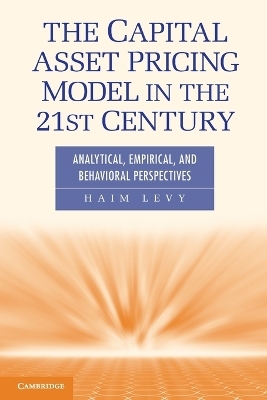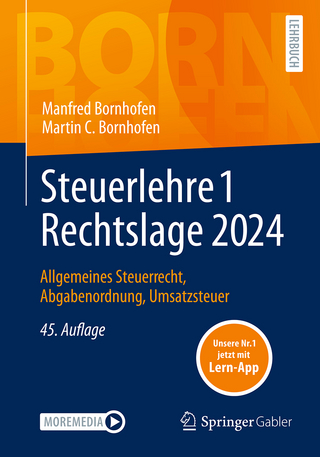
The Capital Asset Pricing Model in the 21st Century
Cambridge University Press (Verlag)
978-0-521-18651-3 (ISBN)
The Capital Asset Pricing Model (CAPM) and the mean-variance (M-V) rule, which are based on classic expected utility theory, have been heavily criticized theoretically and empirically. The advent of behavioral economics, prospect theory and other psychology-minded approaches in finance challenges the rational investor model from which CAPM and M-V derive. Haim Levy argues that the tension between the classic financial models and behavioral economics approaches is more apparent than real. This book aims to relax the tension between the two paradigms. Specifically, Professor Levy shows that although behavioral economics contradicts aspects of expected utility theory, CAPM and M-V are intact in both expected utility theory and cumulative prospect theory frameworks. There is furthermore no evidence to reject CAPM empirically when ex-ante parameters are employed. Professionals may thus comfortably teach and use CAPM and behavioral economics or cumulative prospect theory as coexisting paradigms.
Haim Levy is Miles Robinson Professor of Business Administration at the Hebrew University of Jerusalem and Dean of the Academic Center of Law and Business, Israel. The author of hundreds of articles in leading academic journals and about twenty books, he has obtained the ranking of the most prolific researcher in finance in the world covering the forty years through 1986 and the most prolific researcher in finance in the world in the core sixteen finance journals covering the fifty-year period through 2005. A co-author with Nobel Laureates Harry Markowitz and Paul Samuelson, Professor Levy's major research contributions have been to the field of stochastic dominance, which sets forth the criteria for decision making under conditions of uncertainty, in both expected utility and prospect theory paradigms. He has also developed economic models for equilibrium asset pricing in an imperfect market. Professor Levy received the Hebrew University's Prize for Excellence in Research in 1996 and the Emet Prize in 2006. He has served as economic adviser to the Bank of Israel and held a University Professor position at the University of Florida and visiting academic positions at the University of California, Berkeley and the Wharton School, University of Pennsylvania. He received his Ph.D. from the Hebrew University in 1969 and has held a full professorship there since 1976.
1. Overview; 2. Expected utility theory; 3. Expected utility and investment decision rules; 4. The mean-variance rule; 5. The capital asset pricing model (CAPM); 6. Extensions of the CAPM; 7. The CAPM cannot be rejected: empirical and experimental evidence; 8. Theoretical and empirical criticisms of the M-V rule; 9. Prospect theory and expected utility; 10. Cumulative decision weights: no dominance violation; 11. M-V rule, the CAPM, and the cumulative prospect theory: coexistence.
| Erscheint lt. Verlag | 30.10.2011 |
|---|---|
| Zusatzinfo | 32 Tables, unspecified; 63 Line drawings, unspecified |
| Verlagsort | Cambridge |
| Sprache | englisch |
| Maße | 152 x 229 mm |
| Gewicht | 600 g |
| Themenwelt | Wirtschaft ► Betriebswirtschaft / Management ► Finanzierung |
| Wirtschaft ► Betriebswirtschaft / Management ► Rechnungswesen / Bilanzen | |
| Wirtschaft ► Volkswirtschaftslehre ► Ökonometrie | |
| ISBN-10 | 0-521-18651-X / 052118651X |
| ISBN-13 | 978-0-521-18651-3 / 9780521186513 |
| Zustand | Neuware |
| Haben Sie eine Frage zum Produkt? |
aus dem Bereich


